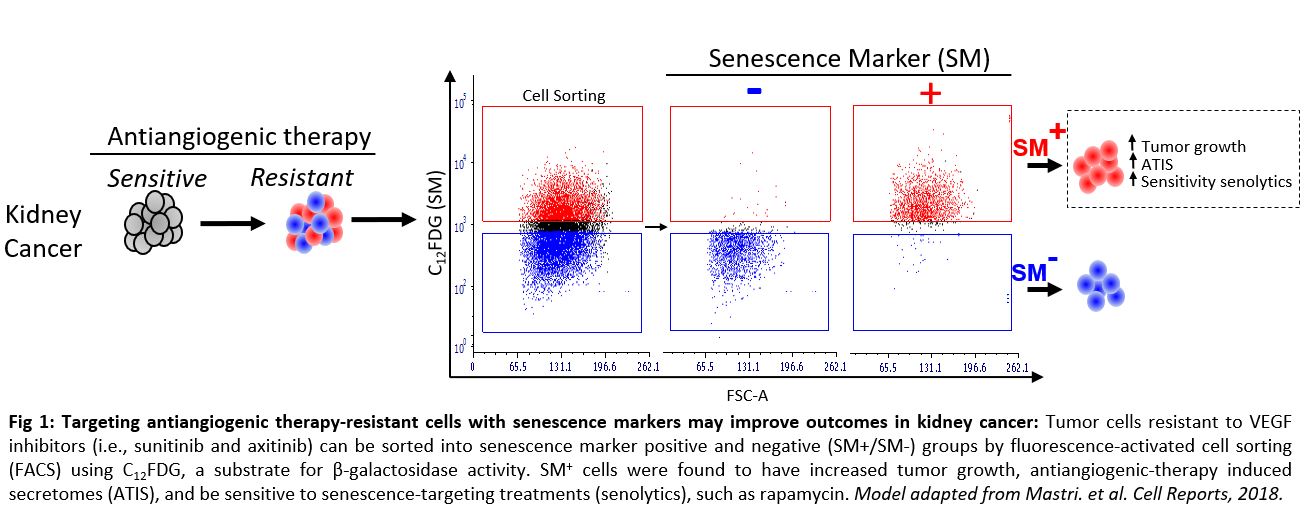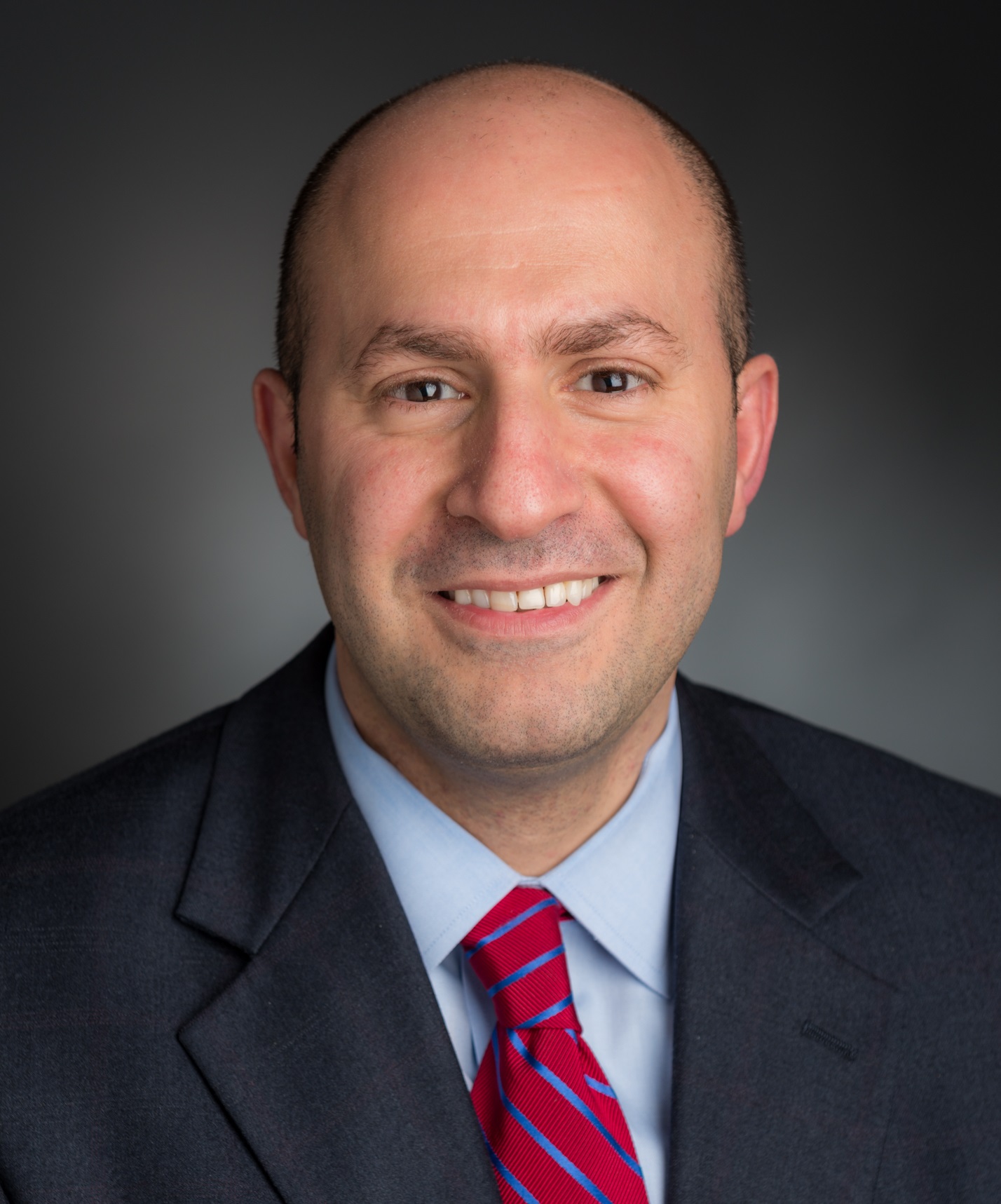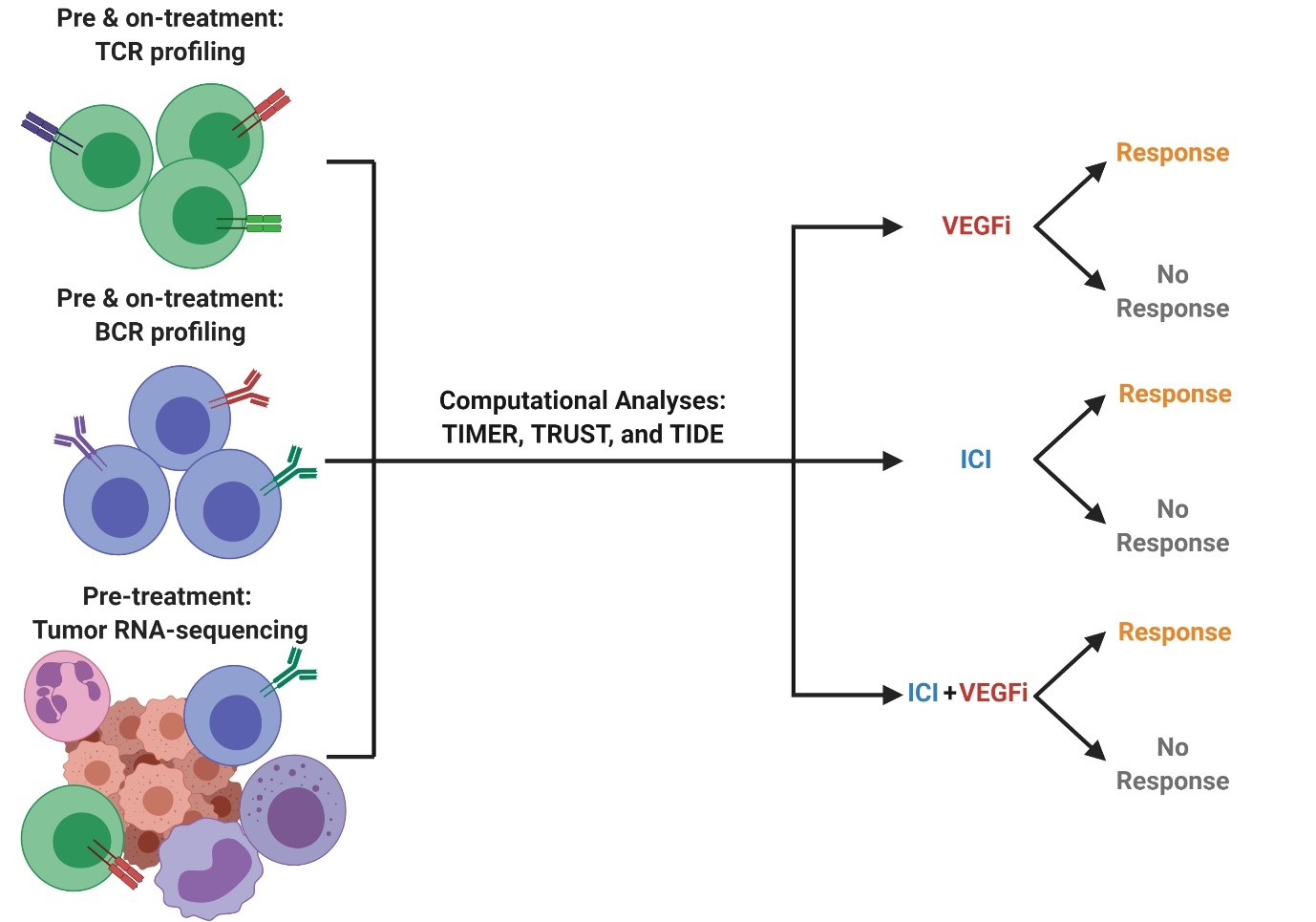Kidney Cancer



Posted March 6, 2020
John Ebos, Ph.D., Roswell Park Comprehensive Cancer Center, and Toni Choueiri, M.D., Dana-Farber Cancer Institute, Harvard Medical School

Kidney and renal pelvis cancers accounted for 4.2% of all new cancer cases in the United States, [[1]] last year, affecting men twice as often as women, and resulted in an estimated 14,770 deaths. The vast majority (90%-95%) of these cancers are renal cell carcinoma (RCC), which originates in the cells of the proximal tubule, the small tubes that transport primary urine within the kidney. A history of cigarette smoking and obesity are two major risk indicators for the development of RCC and prevalently affect Veterans, in whom an estimated 1,300 new cases are diagnosed annually.[[2]] Approximately 25% of RCC patients present with metastatic disease (mRCC) at initial diagnosis, and 50% of patients develop metastases over their lifetimes. Development of mRCC poses unique challenges to treatment as these tumors often are refractory to initial therapies and present significant morbidity and mortality risks to patients.
One class of front-line therapy for patients with mRCC targets tumor-associated angiogenesis, or new blood vessel outgrowth from the existing local vasculature, to starve tumor cells of oxygen and nutrients carried by the bloodstream. This indirect method of treatment focuses not on the tumor itself, but rather on the local tumor microenvironment. Biologic and pharmacologic therapies that inhibit angiogenesis by blocking the vascular endothelial growth factor (VEGF) pathway have shown promise in extending the lives of patients with mRCC, though most eventually progress due to therapeutic resistance. Recently, research has begun to focus on combining VEGF inhibition with other front-line treatments in mRCC and in determining biomarkers of the host microenvironment, which may predict patient response to VEGF inhibition to guide therapeutic decision making.
Dr. John Ebos and his team, supported by a fiscal year 2013 (FY13) Career Development Award from the Peer Reviewed Cancer Research Program, revealed an unappreciated tumor response to VEGF receptor inhibition. Dr. Ebos’ study, which he described in a recent Cell Reports article, focused on a phenomenon termed rebound growth, in which tumor cells survive VEGF inhibition by entering a senescent, or dormant, state and then emerge to rapidly regrow after therapy is halted.[[3]] Utilizing VEGF inhibitor (sunitinib)-resistant cells, the group confirmed the emergence of hallmarks of senescence, including an antiangiogenic therapy-induced secretome (ATIS), which mimics senescence associated secretory phenotypes (SASPs). Importantly, SASPs are known to facilitate regrowth and metastatic spread of tumor cells, and Dr. Ebos’s team found that cells with a short-term persistent ATIS profile were able to effectively produce rapid local and metastatic growth when transplanted into mice.
Building on this finding, the investigators treated sunitinib-resistant, ATIS-positive tumor cells with known inhibitors of SASPs and found that this reduced rebound growth in mice after sunitinib withdrawal. The senescent phenotype of tumor cells was found to persist for a variable period after sunitinib withdrawal, but eventually reversed over longer periods without treatment. This suggests that sunitinib treatment induces an incomplete or escapable senescent-like state that provides tumor cells protection from death and an ability to emerge to rapidly reconstitute primary or metastatic lesions. Dr. Ebos’ work indicates that the senescent-like phenotype induced by sunitinib resistance may provide biomarker-driven targets and a window of opportunity for secondary therapy after withdrawal from antiangiogenics (Figure 1).


In a second effort to exploit antiangiogenics, Dr. Toni Choueiri, with funding from an FY18 Idea Development Award - Established Investigator Option through the Kidney Cancer Research Program, has proposed to develop mRCC patient biomarkers to predict response to therapy. A major leap forward in treatment of mRCC is the advent of immune checkpoint blockade (ICB) therapies such as nivolumab and atezolizumab, which target programmed death protein 1 (PD-1) or its ligand, PDL1, respectively. These therapies inhibit tumor cell evasion of normal immune surveillance and can sensitize them to removal mediated by T and B cells through unique receptors that recognize tumor-specific antigens. Interestingly, VEGF inhibition can also boost the immune response to tumors, suggesting that combination with ICB therapy may synergize to produce a more favorable clinical outcome for patients with mRCC.
Dr. Choueiri’s work utilizes the Dana-Farber Cancer Institute’s RCC biobank resource of patient samples and seeks to define biomarkers in mRCC lesions prior to treatment with either VEGF inhibition, ICB therapy, or a combination of the two to predict responses to intervention. Additionally, the group will evaluate the receptor profiles of circulating T and B cells from patient blood samples, post treatment, to determine the scope of the antitumor immune response and relationship to patient tumor outcomes (Figure 2). Dr. Choueiri is working to understand the dynamism of tumor-infiltrating T and B cell receptor profiles and gene expression patterns within the tumor microenvironment before and during the treatment course for mRCC, and how such changes may instruct antiangiogenic and ICB therapeutic strategies in a tailored way.

VEGFi: VEGF inhibitor; ICI: Immune Checkpoint Inhibitor; TRUST: T cell receptor Repertoire Utilities for Solid Tissue/Tumor; TIMER: Tumor IMmune Estimation Resource; TIDE; Tumor Immune Dysfunction and Exclusion; TCR: T-cell Receptor; BCR: B-cell Receptor
Both of these awards support work that is aimed at boosting antiangiogenic drug effectiveness and improving personalized therapy for patients with mRCC. Dr. Ebos’ work focuses on finding new targets for therapy that emerge as a result of antiangiogenic resistance phenotypes, while Dr. Choueiri’s work seeks to define which current therapies, alone or in concert, will best address a patient’s disease and personal biology. Successes in these endeavors have the potential to provide highly personalized treatment plans to improve patient outcomes, and, equally as important, to avoid therapies that are unlikely to provide benefit for those with mRCC.
[[1]] https://seer.cancer.gov/statfacts/html/kidrp.html
[[2]] Zullig LL, Jackson GL, Dorn RA, Provenzale DT, McNeil R, Thomas CM, Kelley MJ. 2012. Cancer incidence among patients of the U.S. Veterans Affairs Health Care System. Military Medicine 177(6):693-701.
[[3]] Mastri M, Tracz A, Lee CR, Dolan M, Attwood K, Christensen JG, Liu S, and Ebos JML. 2018. A transient pseudosenescent secretome promotes tumor growth after antiangiogenic therapy withdrawal. Cell Reports 25:3706-3720.
Links to Public and Technical Abstracts:
(Choueiri) Host Immune Signatures as Therapy Response Biomarkers in Metastatic Renal Cell Carcinoma
Last updated Thursday, December 5, 2024














